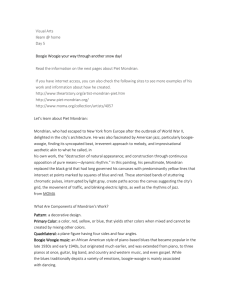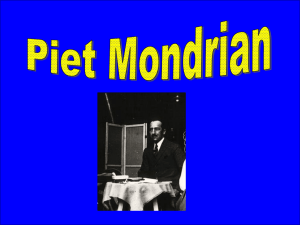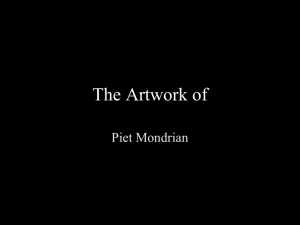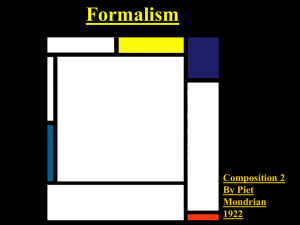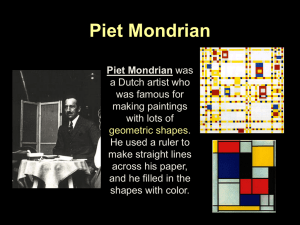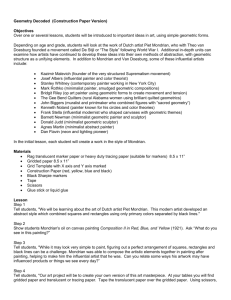Piet Mondrian
advertisement
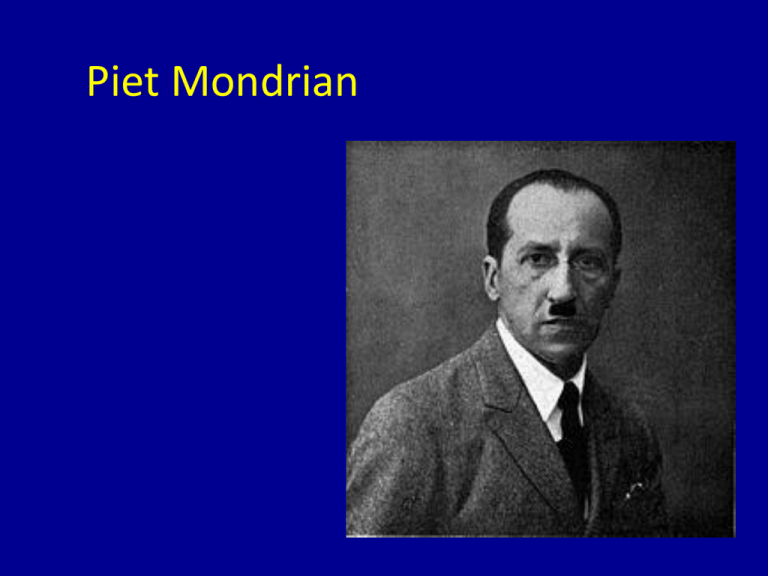
Piet Mondrian Piet Mondrian was born in the Netherlands in 1872. He was influenced by many artistic styles and even helped found an artistic movement called De Stijl. The paintings that Piet Mondrian is most famous for are rectangles of white and primary colors, dissected by black lines. He did not always paint this way, however. Mondrian’s first paintings depicted scenes found in real life. They were done in a style similar to impressionism. As his style grew and changed, he stopped using any colors besides the three primaries: red, yellow, and blue. The painting shown here is Avond. This is the first painting in which Mondrian used only primary colors but you can still see the influence of impressionism. Mondrian painted the fields, farms and canals around Amsterdam and his works at this time reveal a great love of trees and nature. This can be seen in the 1910 watercolor painting "Amaryllis," in which bold colored flowers are beautifully arranged on the paper.. Mondrian soon became interested in cubism. Cubism, is an artistic style in which the subject is broken into meaningful pieces and rearranged in a new order to show the most important parts of the object. The painting shown below, Still Life with Ginger Pot, was painted by Mondrian in the cubist style. Because of the influence of cubism, Mondrian’s paintings became more and more abstract. Mondrian moved to Paris in 1912 so he could further study cubism. In 1914 Mondrian returned home just before World War I broke out. He was stuck there for the duration of the war (1914-1919). During this time he became friends with some other artists and together they began the new movement, De Stijl. The movement was called De Stijl because that was the name of the journal that Mondrian and his friends started. In 1914 Mondrian returned home just before World War I broke out. He was stuck there for the duration of the war (1914-1919). During this time he became friends with some other artists and together they began the new movement, De Stijl. The movement was called De Stijl because that was the name of the journal that Mondrian and his friends started. Mondrian's cleverness was not fully recognized or appreciated until after his death in 1944. Now, his works are highly sought after and numerous exhibitions of his art have been held in cities worldwide. This modest man was one of the great artists of the first half of the 20th century, influencing architectural, painting and sculptural movements. What do you see here? What do you see in this Mondrian painting?
